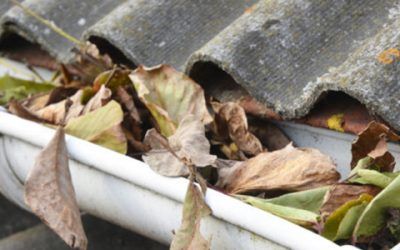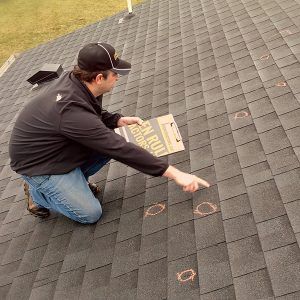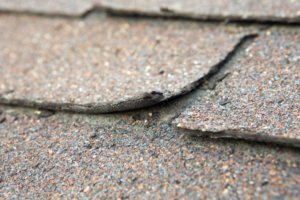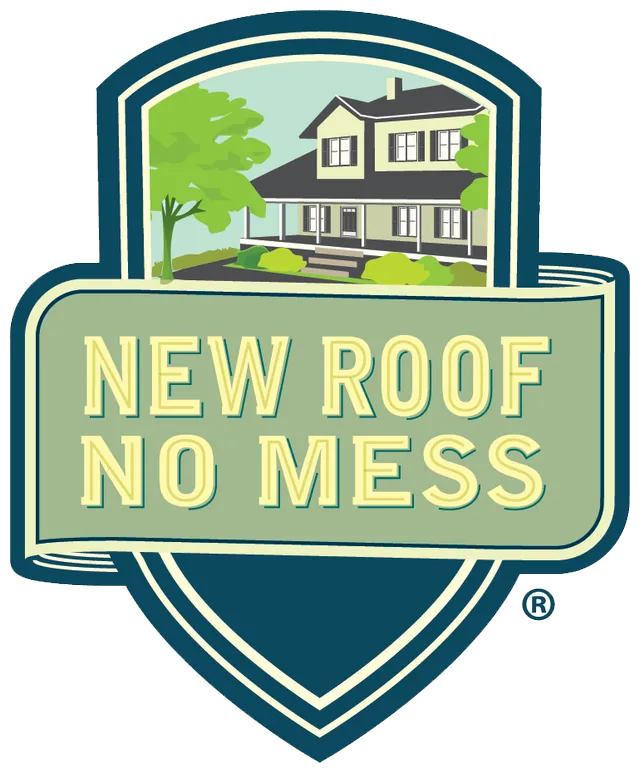Roofs and Ice Dams – A Bad Combination
Obviously, we all know what a roof is, but what about an ice dam?
That’s something that not a lot of folks know much about. However, with winter on its way, we thought now would be a great time for a bit of ice education.
An ice dam is just that– a dam.
It’s a large buildup of ice that forms along the edge of a roof. Without proper care, ice dams can lead to serious damage to the roof itself, rain gutters and downspouts, and the inside of a home. Ice dams form when the roof over the attic gets just warm enough to melt the underside layer of snow on the roof. The melted portion slowly trickles down between the still frozen layer of snow and the shingles, right up until it reaches the eave of the roof. Because the eave extends over the side of the house, it’s always much colder than the rest of the roof. This means that once the melted snow reaches that point, it refreezes. This cycle will repeat itself until an actual dam of ice is built up at the edge of the roof. It’s important to note that gutters can also become so full of snow that they provide a foundation for the ice dam to form as well.
Once an ice dam gets big enough, melted water begins to back up behind it.
And, eventually, the water starts to seep underneath the shingles. The end result will be melted snow dripping into the attic, insulation, ceilings and walls of the home. This leaking water can completely ruin paint, sheetrock, and other interior fixtures. If the ice dam should happen to break free, it can rip shingles and gutters down with it and pretty much destroy anything it winds up landing on (landscaping, windowsills, etc). If left completely unchecked, a soaked-through roof will eventually start to rot.
Now, let’s look at a few “emergency measures” you can take should you find your roof all dammed up in the middle of winter, as well as steps you can take to “ice dam-proof” your home as much as possible.
If you find that ice dams are building on your eaves after a storm, you can try and remove it by working to break it free in small pieces. Never use an ax or another sharp tool; instead, use a small mallet and avoid standing directly under the path where ice may fall. A small mallet is your best tool in this circumstance, but even if you’re as careful as can be, there’s still a chance that the ice can pull shingles down with it or that you could get whacked on the head with a chunk of ice yourself. This is why we always recommend calling in a professional for this kind of project.
If you decide to tackle an ice dam on your own, you’ll also want to clear out gutters of as much snow and ice as safely possible. This is something that you’ll have to do while standing on a ladder (in the middle of winter, in the freezing cold, surrounded by snow and ice– sounds awesome, huh?) A slightly less risky way of doing this is to get some calcium chloride ice melter (NOT rock salt) and create a “tube” by filling up the leg of a pair of pantyhose with the material. Once you’ve got a few “legs” filled up, lay them vertically across the ice dam. This will allow the chemical to slowly melt its way down through the dam and clear a path for the water underneath to flow free.
What can you do to prevent ice dams from forming next winter?
You must start at the root of the problem. Usually, ice dams are caused by a warm roof, which is the result of poor insulation and venting in the space under the roof. A place to start would be to seal any and all points where warm air has the ability to leak from the living areas of the home into the spaces that are directly below the roof sheathing. Also, make sure that your living space(s) is properly insulated so that conduction and convection of heat through the ceiling isn’t happening. You’ll also want to make sure to vent the space between the roof sheathing and insulation, allowing any heat that does leak through to be carried away properly.
Still not sure of what to do about ice dams or don’t feel properly equipped to fix the problem? That’s okay, that’s what we’re here for! The experts at Golden Rule Contractors are well-versed in roofing projects throughout the year. Give us a call to set up a consultation today!
RECENT POSTS







